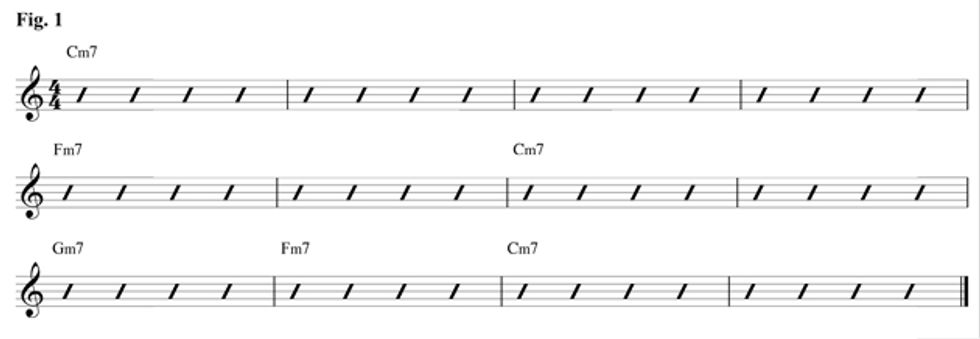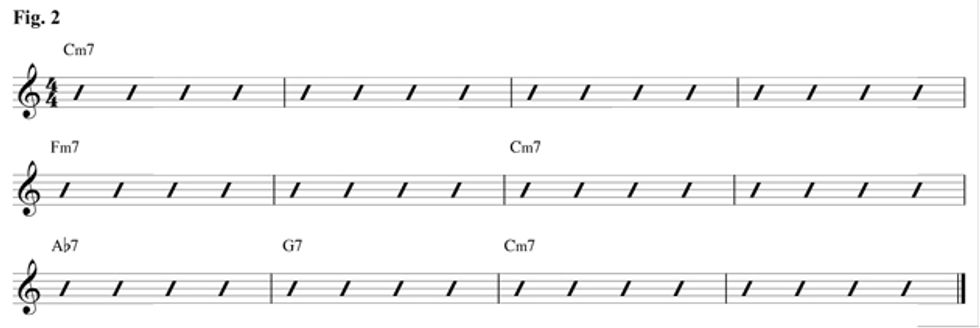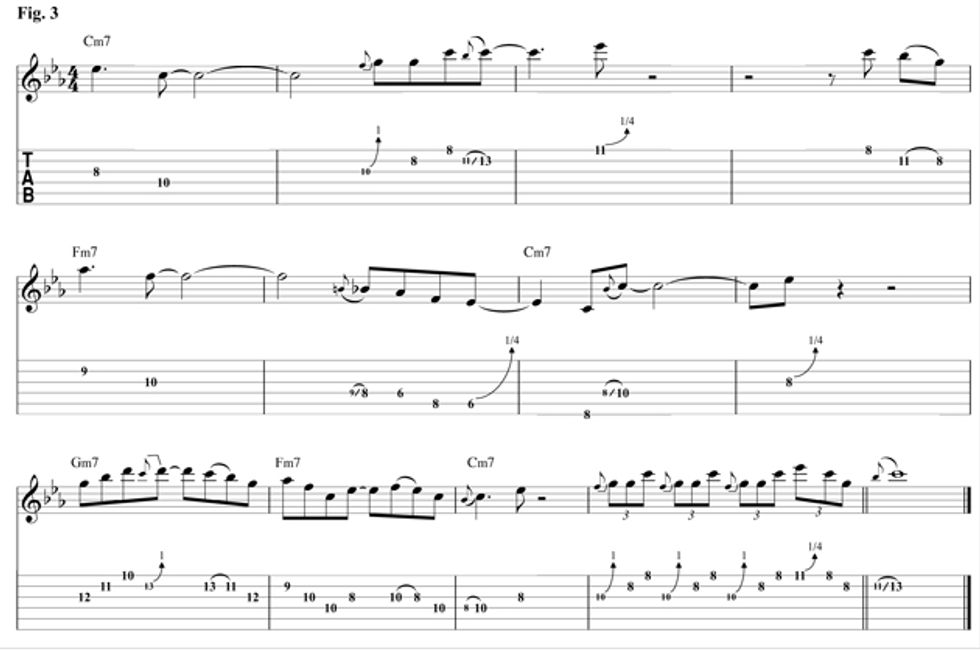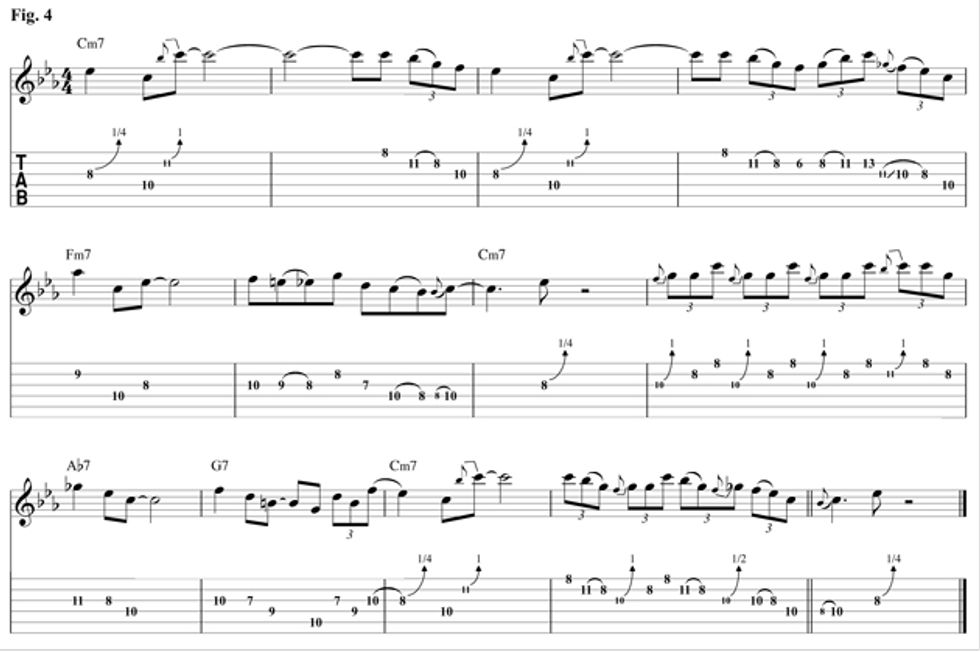Not all minor blues progressions are created equal. Delve into the subtle differences and learn how to make a simple minor progression more interesting with a few easy substitutions.
Chops: Intermediate
Theory: Intermediate
Lesson Overview:
• Learn different minor blues progressions.
• Combine simple phrases to create space and movement.
• Understand how to combine the minor pentatonic scale with arpeggios to create a more interesting sound.
Click here to download a printable PDF of this lesson's notation.
For the last several months we've gone deep inside the dominant 7 chord with arpeggios, scale substitutions, and various other ways to outline that dominant sound. Obviously, the dominant 7 is a big part of the blues vocabulary, but I think it's about time we take a look at the other side of blues and the broad sound of the minor blues chord progression.
This is such an important subject because there are some dramatic differences from region to region with the minor blues. It's feasible you could get up to jam on a “minor blues in C” and find everyone playing different things that clash horribly with each other.
The first way to explore a minor blues is to simply change the dominant 7 chords in a standard 12-bar blues into minor chords. Listen to Fig. 1 and follow the chord progression. I'm sure you've probably heard this (and played it) many times yourself.
Now, thanks to the beauty of the internet, let's take a few minutes to listen to a couple of minor blues tunes like "Mr. P.C." by John Coltrane and "The Thrill is Gone" by B.B. King.
Now let's take a look at the chord progression for "Mr. P.C." (shown in Fig. 2) and then compare it to the minor blues we've already looked at.
Now, if you study these two progressions closely you'll notice that the first eight measures are exactly the same, but the last four differ. The final four measures of Fig. 1 moves from the Vm down to the IVm before moving back to the tonic, while the second progression moves from the VI7 down to the V7 then back to the tonic. This is an important distinction: As a soloist you don't want to be playing over measure nine thinking it's a VI chord when the band's playing a Vm because, as we'll start to explore in upcoming lessons, the notes you choose to play over each variation couldn't be more different.
The question is why?
When you look at the second chord progression, there's an added dominant 7 chord that resolves from G up to C (in measure 10-11), and while we're now resolving to a minor chord, the basic idea of tension and resolution we’ve discussed in previous lessons still applies. We're going to focus on the second progression because in this context we'll be able to add some jazzy “beyond blues” ideas to spice things up.
In Fig. 3 and Fig. 4 I’ve written a relatively simple solo over each chord progression where I'm targeting the basic chord tones in each measure, but at the same time you'll see how nice it is to fall back on the minor pentatonic scale. This is simple phrasing with lots of space, so it shouldn't have you struggling.
Now it’s time to try improvising some of your own solos using the minor pentatonic scale and the dominant 7 arpeggios we've looked at.
And here’s a little bonus: To illustrate my earlier point, this is the second solo played over the first chord progression. I think you'll agree when you get to measure eight it doesn't sound good at all!
I hope you've got your head around the difference between these two progressions. In our next lesson we'll look into the difference between the Dorian and Aeolian modes and how we can use both in our blues playing. Until then, listen to a few more minor blues songs and see if you can work out which of these minor progressions they incorporate.




